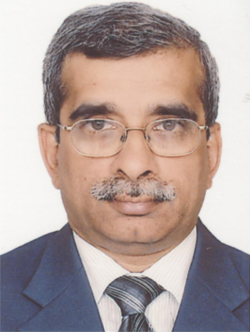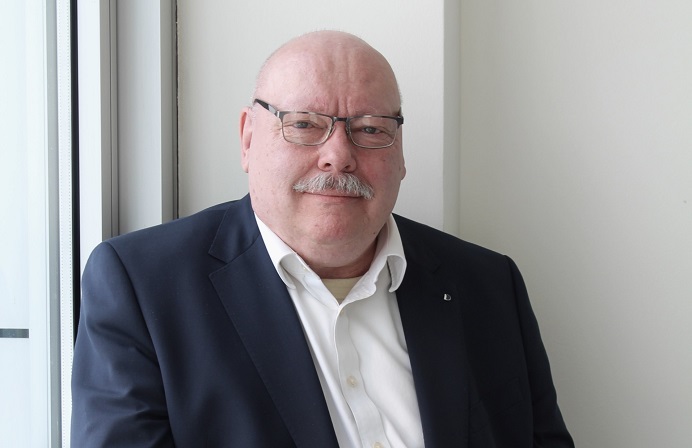
Wong: What strategies does the State Bank of India (SBI) have in place to meet the increasing demand for banking in India’s rural regions; and how will technology play a role?
Kumar: We are not only opening new branches but also deploying technology innovatively to provide financial services at affordable cost to the unreachable and un-banked or underserved rural poor. We have covered more than 100,000 hitherto un-banked villages. We have taken upon ourselves to open smart card based ‘No Frills’ accounts in un-banked villages through Point of Sale (POS) instruments handled by the business correspondents, under the financial inclusion initiative. Over 1 million ‘No-frills’ (basic) Savings Bank accounts have been opened in the names of beneficiaries into which the government benefits are paid. SBI Tiny Cards, based on Smart Card technology, have been provided to the beneficiaries who can withdraw money by simply swiping their SBI Tiny Card on a hand held device with the business facilitator or business correspondent who could be, say, the village postman. We have, till now, issued more than 3 million such cards. SBI is the market leader in credit linkage of Self Help Groups. We have credit linked more than 1.5 million Self Help Groups that have benefited more than 21 million families.
Wong: Can you share some of the business drivers behind SBI’s recently launched ‘single information repository’ solution; and how will success be measured?
Kumar: Key business drivers behind our data warehouse initiative are our requirements for regulatory compliance, risk management, CRM and corporate performance management. The measure of success in these areas will be:
- growth of business by analytics of customer information and broad based product marketing;
- enhance revenue of treasury operations by using real time information from different channels;
- enhance profits by processing reporting capability with reduced delays;
- reduce number of data marts;
- reduced cost of data storage and distributed MIS; and
- reduced on-site inspection and audit cost.
Wong: India is among the fastest growing economies in the world to embrace mobile banking. What mobile technology initiatives can we expect to see from SBI in the next 12 to 18 months?
Kumar: We have enabled mobile banking services for our customers. Initially, it was available only for high end Java enabled handsets. But in view of our large rural and semi-urban customer base, we have introduced USSD enabled mobile banking for lower end handsets also. Currently, through mobile banking, we offer funds transfers within the bank and also to other banks using NEFT. Other facilities are enquiry services like balance enquiry and mini statement, cheque book request, bill payment of utility bills and credit cards and m-commerce transactions like mobile top up, merchant payments and SBI Life Insurance premium. In the near future, we plan to take the following initiatives under mobile banking.
- Prepaid mobile wallet ( for both customers and non-customers)
- Money transfer (Person-to-Person) based on beneficiary mobile Number
- POS transaction through mobile
- Experiment on voice recognition technology for greater safety as also to reach illiterates
- Integration of call centre service with mobile banking (e.g. biller registration)
- Tie-ups with various aggregators for service like ticket booking (travel/entertainment), road toll payments, DTH top-ups etc.
- Examination/experimentation on NFC (Near Field Communication) technology as a substitute of swiping
Wong: What are your IT priorities for the year ahead?
Kumar: Our IT initiatives have matured and now there is a need to aggressively market our technology products to our customers by promoting cross selling and migration of customers to alternate channels. We will be adding more functionalities and rolling out our technology enabled products as per the business requirements. Our data warehouse project is under implementation and through this project we expect to increase efficiency and productivity of our staff by providing them with quality information at the right time.
We keep our IT infrastructure effective, efficient, scalable and secure to meet the present and emergent business needs. This is a continuous process and we will take advantage of emerging and cost effective technologies to strengthen our IT infrastructure.
Wong: From a technology perspective, what are the key challenges facing India’s banking sector right now?
Kumar: The Indian banking sector is quite strong, stable and technology driven. While the Indian banking sector is able to provide full gamut of banking services in the metro and urban areas, we have a lot of ground to cover as far as providing banking services in rural areas is concerned. About half the adult population in our country is financially excluded. This means that more than 500 million people do not have a deposit account with any bank. We have already taken lead in this direction and have covered more than 100,000 unbanked villages through technology driven solutions.
Wong: What are some of the most notable technology trends emerging in India’s financial services sector right now?
Kumar: Wireless mobile broadband technology is seen as the emerging technology which can benefit the Indian financial services sector. Cloud computing is another technology with potential of rationalising IT costs. In today’s context, however, what I consider to be of the utmost importance is the adoption of green technology. India’s financial services sector uses data centres extensively. Data centres consume a lot of energy and increase the carbon footprint. Moreover, India is an energy deficit country and therefore, there is a need for the Indian financial sector to adopt green technologies to reduce cost as well as carbon footprint.
Wong: SBI recently introduced varied models of ATMs (i.e. Solar ATMs, Rural ATMs with bio-metric functionality, multi purpose kiosks and talking ATMs). How do you see the ATM channel evolving in the next three to five years?
Kumar: Introduction of different variant of ATMs aims at catering to the various sections of our customers. Installation of solar powered ATMs will help the bank in reducing its carbon footprint besides providing ATM services to power-scarce areas. Setting up of rural ATMs with biometric features will help the bank towards financial inclusion. Installation of multi-functional kiosks (MFKs) will be yet another step for encouraging non cash transactions while talking ATMs will be of great help to the visually impaired customers.
We have now a strong presence in the metro and urban centres. New ATMs will primarily be rolled down in the next 2 to 3 years in the rural/semi-urban areas so that the fruits of technology are available to these areas too.
While the ATMs are primarily meant for cash dispensation, other services such as accepting cash/cheque deposits, payment of utility services bills, card to card transfers, trust donations/fee payment, mobile top up etc. are also available on ATMs. Through multi functional kiosks (MFKs) these non cash services are also available including railway ticket booking. Such services will continue to grow and many more non cash products will be made available on these ATMs.
Wong: How far in advance do you chart your regional IT strategy; and how flexible are these to market changes?
Kumar: We take up implementation of IT projects based on business demands. A number of projects are also taken up to keep our IT infrastructure effective, efficient and secure to meet the present and emergent business needs. Due to rapidly changing business as well as technology environment, we need to be flexible in our IT strategy. We proactively try to optimise our IT infrastructure to take advantage from the opportunities created by changing IT and business environment.
Wong: Every IT leader, particularly at your level, has a legacy they wish to be remembered for. What is yours?
Kumar: I am a career banker without any substantial IT background. However, I am a firm technology believer. In my banking career spanning about 35 years, I have handled varied assignments like corporate banking, business process reengineering, learning and development, audit, and retail banking etc. My present assignment as the head of IT in SBI has come in the course of my journey in the bank. Now, I am proud to be the head of the IT of my great institution, where we have built one of the largest core banking networks and one of the largest bank owned ATM networks in the world. My endeavour, at this stage, is to spread awareness and appreciation of capabilities and benefits of IT to all employees at all the levels in my organisation.





